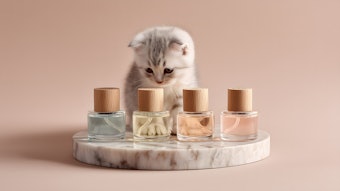
Over the last two decades, Puris has been known for its buchu essential oils and isolates. Since its founding in 2003, Puris has become a multi-faceted company with a focus on scientific innovation and sustainability. Being that Puris remains a key player in the buchu oil production market.
Read this article in the Perfumer & Flavorist+ April 2024 issue.
Perfumer & Flavorist+ connected with Sales & Marketing manager Stefan du Toit to discuss the common misconceptions by industry professionals regarding formulating with buchu oil, the company’s evolution and new product developments.
Puris celebrated its 21st anniversary this year, can you share about the company’s evolution in the industry?
Stefan du Toit [ST]: Our journey started in 2003 with buchu oil, extracted from the herbaceous Agathosma species, which is part of the Fynbos kingdom that is endemic to the Western Cape of South Africa. Leveraging our expertise in mild-separation techniques, we have added further value to the process with the production of Buchu Sulphur Fractions and other isolates. Subsequently, this proficiency expanded to encompass citrus oils and natural aroma chemicals.
What makes Puris’ buchu oil unique to what is currently on the market?
ST: Our sourcing strategy involves acquiring buchu plant material from diverse regional farmers and meticulously identifying chemotypes. This enables us to furnish tailored specifications that align precisely with the chemical composition and sensory attributes of any specification and offer product consistency on a level that is expected by the most demanding end-users.
Similarly, as the sole at-source producer supplying Buchu Sulphur Fractions, each specification is tailored to your unique requirements.
Additionally, as pioneers in buchu oil production, we have established a Benefits Sharing Agreement, aligning with Nagoya principles, and have been remitting royalties to indigenous knowledge holders (San & Khoi) since 2019.
 Innovation remains integral to Puris' ethos, leading us to explore novel technologies and products, including ventures into biotechnology.courtesy of Puris
Innovation remains integral to Puris' ethos, leading us to explore novel technologies and products, including ventures into biotechnology.courtesy of Puris
What would you say are some of the common misconceptions perfumers and flavorists have regarding formulating with buchu oil?
ST: A common misconception pertains to the belief that only two types of buchu oils exist, derived from Agothosma betulina and crenulata species. However, multiple Betulina chemotypes, including naturally occurring hybrids, have been identified. Each chemotype exhibits unique traits contingent upon its regional habitat, such as high isomenthone Betulina in the Piketberg mountains and high-Diosphenol Betulina in the Citrusdal mountains, resulting in distinct organoleptic profiles.
Can you share some of Puris’ current initiatives that are taking place outside of the lab?
ST: We maintain a steadfast commitment to buchu sustainability, evident in our recent collaboration on an agronomy project with a commercial partner. This initiative aims to enhance genetic diversity, propagation techniques, and cultivation methodologies. Moreover, our long-term supply agreements with farmers ensure their dedication to buchu cultivation, rendering it economically viable.
Additionally, as pioneers in buchu oil production, we have established a Benefits Sharing Agreement, aligning with Nagoya principles, and have been remitting royalties to indigenous knowledge holders (San & Khoi) since 2019.
Yes, Puris is known for its buchu oil production, but could you share some product offerings or services the company has in its portfolio that the industry may not be as familiar with?
ST: Innovation remains integral to Puris' ethos, leading us to explore novel technologies and products, including ventures into biotechnology. Our inaugural biotech-derived product, EU Natural Sotolone (Fenugreek Lactone), stands as a testament to this commitment. Additionally, our repertoire includes citrus oils and fractions, continuously growing and demanding new attention to add value.
 du Toit shares, "We maintain a steadfast commitment to buchu sustainability, evident in our recent collaboration on an agronomy project with a commercial partner."courtesy of Puris
du Toit shares, "We maintain a steadfast commitment to buchu sustainability, evident in our recent collaboration on an agronomy project with a commercial partner."courtesy of Puris
What does the future look like for Puris? Any current projects you can share that will be brought to market in the near future?
ST: We are currently pioneering another ground-breaking product for South Africa, Orris Butter ex-Iris Pallida, employing innovative techniques to expedite the aging process of the Iris rhizomes. We are extremely excited for our first harvest this year.
For more information, please contact [email protected].
Disclaimer:
The above paid-for content was produced by and posted on behalf of the Sponsor. Content provided is generated solely by the Sponsor or its affiliates, and it is the Sponsor’s responsibility for the accuracy, completeness and validity of all information included. Perfumer & Flavorist takes steps to ensure that you will not confuse sponsored content with content produced by Perfumer & Flavorist and governed by its editorial policy.










